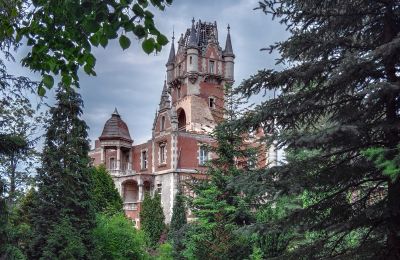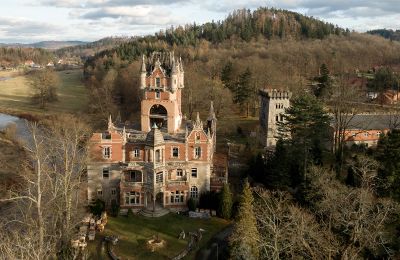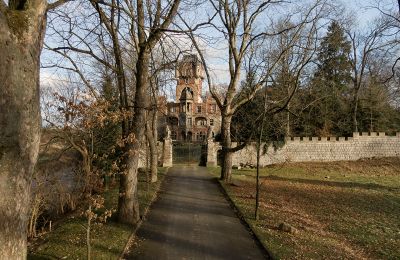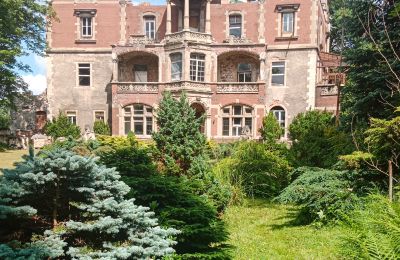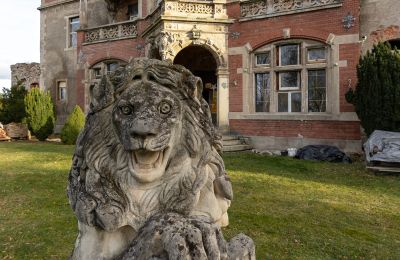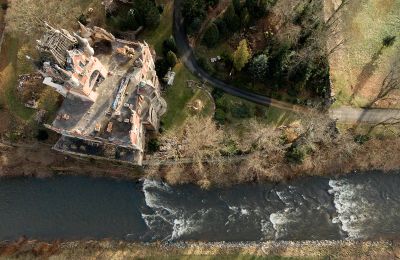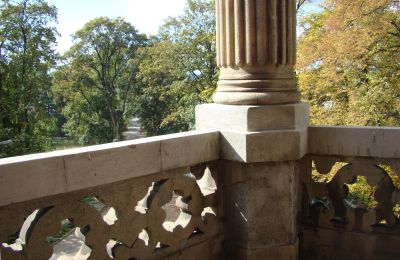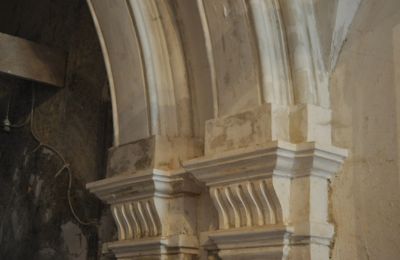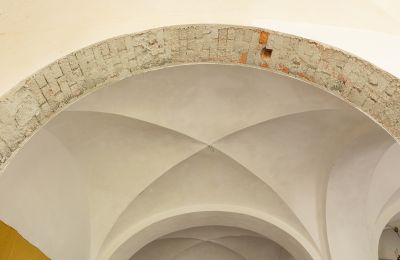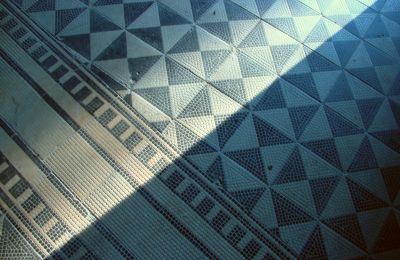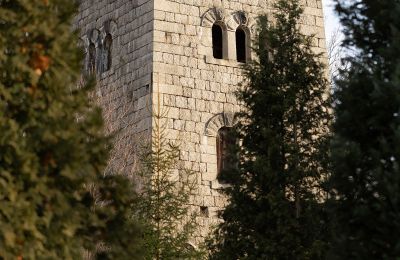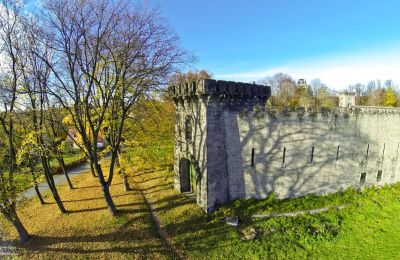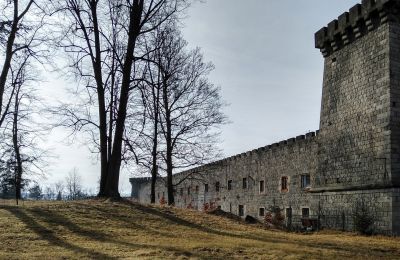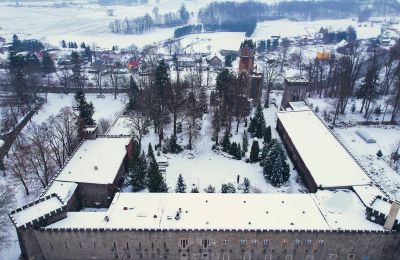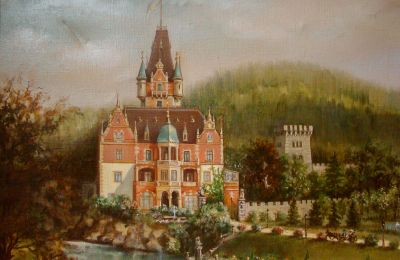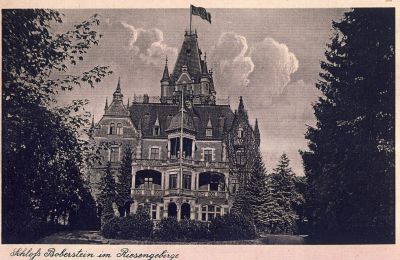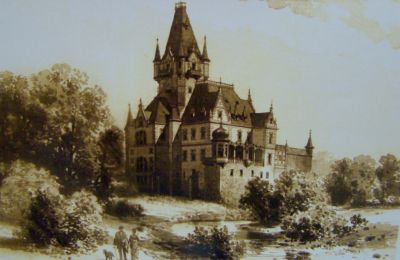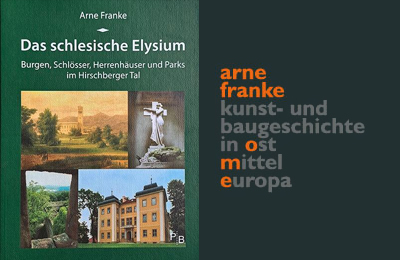In the Spotlight: Bobrów Castle in Hirschberg Valley
Among the most extraordinary castles of the Hirschberg Valley Kotlina Jeleniogórska, referred to in the 19th century as the "Silesian Elysium," is Boberstein Castle/Bobrów. Its picturesque construction rises above the southern bank of the Bober/Bóbr River, set against a scenic landscape backdrop.Boberstein Castle up to the 19th Century
The noble residence, currently undergoing reconstruction for many years, likely originated from a small defensive structure built in the 13th century as part of the "Bober Border" between the Polish-Piast and Bohemian-Přemyslid realms to secure a ford across the river. Around 1450, under Anton von Schaffgotsch, a "fortified house" was constructed, possibly utilizing an older residential tower, on a trapezoidal floor plan, seemingly integrated into a larger courtyard complex.Since 1607, owned by Nickel von Zedlitz, the estate underwent Renaissance-style renovations and expansions. After destruction during the Thirty Years' War, ownership changed hands multiple times, including a transfer to the Jesuit convent in Hirschberg by at least 1737, until Boberstein came into the possession of Hirschberg patrician and veil merchant Daniel von Buchs in 1776. In 1817, Carl Heinrich Sigismund von Rothkirch, who already owned the manors of Berthelsdorf/Barcinek and Schildau/Wojanów, acquired the castle, eventually selling it to Ernestine von Köckwitz in 1836.
Around 1880, the estate came under the ownership of Georg Jakob Paul von Decker the Younger, hailing from a prominent Berlin printing family ennobled alongside his father, Rudolf Ludwig, in 1863. His son, Hans Rudolf, extensively renovated the castle in 1894 based on plans by Berlin architect Paul Roetger, who had previously designed the family's villa in Berlin-Tiergarten. The castle's structure was expanded with annexes and enriched with gables, bay windows, and opulent ornamentation inspired by Dutch and French Renaissance styles. The picturesque appearance was further enhanced by a tower accompanied by small watchtowers, housing the spacious staircase. Adjacent to the castle, an exceptionally designed three-winged courtyard complex emerged, with two-story agricultural buildings, enclosed by sturdy granite towers reminiscent of a Roman fortress. Additionally, the estate was integrated into a small park extending along the Bober.
Through Turbulent Times to Cultural Heritage - The 20th Century
In 1922, the noble Francken-Sierstorpff family acquired the property, but due to financial reasons, they withdrew from the estate in 1933, selling it to the Nazi state. Initially, the castle and its outbuildings housed an SA sports school. From September 1939, the estate was adapted into a detention camp, later subordinated to the Gross-Rosen concentration camp. It temporarily held Poles, especially Jewish residents from the area east of Kalisz. Between January 1943 and May 1945, it served as an internment camp for deportees from Luxembourg.Following World War II, the Red Army housed refugees from war-torn Greece in the castle. Subsequently, the Polish Civil Defense briefly took possession of the facility until the agricultural buildings were converted into a state-run children's holiday camp.
Since 1970, Boberstein Castle has stood vacant and dilapidated, despite being listed as a monument in 1976. In subsequent years, the roof was removed to utilize the distinctive tiles for the construction of two residential buildings in Hirschberg, today Jelenia Góra.
How a German-Polish Association Revived the Abandoned Castle
In 1994, a German-Polish association, aiming to preserve and promote Silesian culture and traditions, acquired the ruins. Since then, numerous restoration efforts have been made on the agricultural buildings, some of which have been converted for tourist use. The three-story castle, whose reconstruction has been stagnant for several years, received new concrete floors instead of the previously heavily damaged wooden beam ceilings during the renovation works. However, the partially preserved 16th-century cross-ribbed vaults in the ground floor remained intact. Inside, apart from the original room layouts, smaller fragments of 16th-century wall paintings and decorative paintings from the Historicism period have been preserved.April 2024: Who Will Take Over Castle Bobrów?
In April 2024, Boberstein Castle is on the market. The entire site is currently not open to the public. This historic property would be suitable for a real estate investor with experience in heritage restoration. In connection with a long-term vision, the castle, once among the most beautiful in the Hirschberg Valley, can become a true attraction in the unique and cherished cultural landscape of the Giant Mountains.


